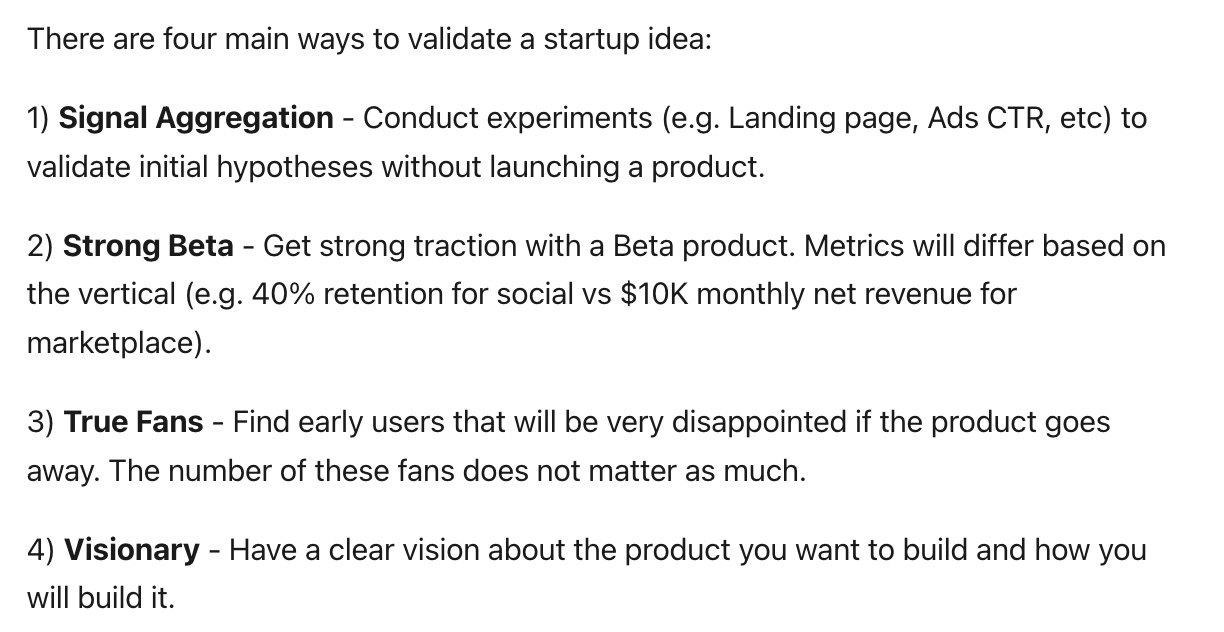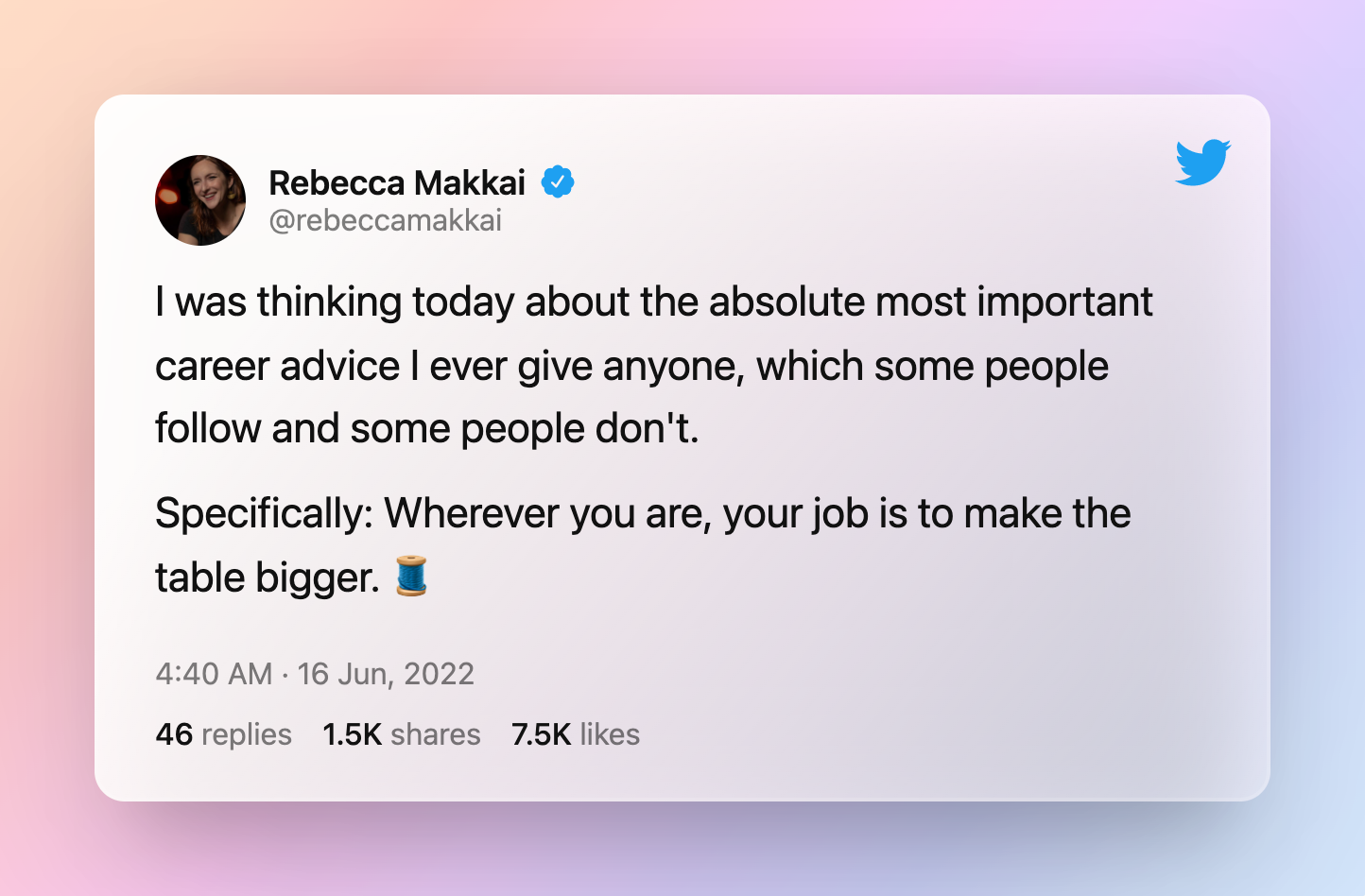#60 Wherever you are, your job is to make the table bigger
Back to basics and things that matter
Seth Godin is back to help with the opening act. He titled his latest “Could be better”. In the short post he goes on to establish why and how that’s such a good thing. I’m posting it verbatim here.
Three words that open the door for insight, understanding and improvement.
Gratitude isn’t in question. Neither is acceptance of the situation. It’s not unpatriotic or disloyal to talk about how something could be improved. Instead, when we care enough to say, “could be better,” we’re putting ourselves on the hook to create. You need to care enough to describe an improvement.
Because once you’ve announced how something can be better, you get the chance to show that it can be done.
It’s not just about giving feedback, it’s about participating in improving together. I’m looking forward to your “could be better” input for me. Share your feedback for me and this newsletter through comments or writing directly to me. I will be highly obliged.
And on that hope, let’s get to today’s finds.
1. Importance of CAC Payback
LTV, CAC, LTV/CAC, CAC Payback - some of us use these terms regularly. They are some of the most critical KPIs on the business front. While their core definitions are simple, they are not so easy when it comes to using them smartly. Parsa Saljoughian’s post is a great primer on understanding these in practical terms. He goes on to share how to use these to check your business health.
Here's a quick summary of his message.
2. Idea validation framework
Leo Luo revisited his “Idea validation framework” in a recent post on his newsletter “Consumer Startups”. He talks of 4 key methods that can be used to validate a startup idea. Here’s a quick snapshot from his post:
He uses relevant examples to substantiate his points. I found it very useful because of the simplicity in his articulation. He has called out key advantages & disadvantages of each method and leaves us sufficient clues to identify the method relevant to our needs.
3. (Re)Design of Laundry symbols
Allen’s post proclaims - laundry symbols make no sense. Here’s a snippet capturing his reasoning.
The problem is that these symbols are designed to be memorized or looked up. In reality, people rarely memorize them, nor do they look up the symbols before doing laundry. Furthermore, these are not error codes where you can Google to get a quick corresponding answer. These are abstract icons, sometimes with subtle differences in between, that require a user to pull up a chart to compare and identify. Laundry itself is a hassle, the symbols should help save work and not do the opposite.
Here’s a quick reference image of laundry symbols to refresh your memory.
Image credit: Allen’s medium post.
You get the context now. In our busy & mundane life, we tend to miss the finer details. For a functioning world, most of such misses are fairly harmless. But do that with your wife’s favorite heirloom suit and you will know the pain (disclosure: I did not commit any such mistake, any resemblance with real life situation is purely coincidental)
While Allen’s post did not go into great details about how he came up with these exact designs, the shared perspectives are good food for thought to think about a design process.
I’ve been talking to think more deeply about product & communication design. It’s surprising how often that gets understood as a feature or UI design. Problem & solution efforts like this that are the learning ground for problem solving & how to leverage design to do it better.
Don’t you think so?
4. Putting bounce in spring animations
Animations make our digital experiences feel more real. As we use tons of apps for almost everything in our life, these animations that precede our actions create a sense of excitement.
What goes behind such animations? A lot! I did not know it until I read this post from Figma’s engineers about how they built the spring animations. There is physics, mathematics, coding and a lot of user interaction understanding that goes behind making a tiny effect that lasts just a couple of seconds.
A little geeky stuff, I must warn. But it's bound to make you appreciate the finer details better.
5. Lessons to become a better person, manager, and contributor
Finally I succumbed and took the paid subscription of Medium. Don't get me wrong, I am still split on their approach to content monetization. But, opening a private window or 12ft.io tab for those clickbaity articles felt a lot of effort. And so, I took the lazy way out.
Anyways, they do have some good content hiding among the barrage of clickbaity stuff. Carter Gibson's “8 lessons from my mentors at Google” is one of those useful posts. He shares very actionable inputs and is worth listening to.
Here're my favorite ones:
Say, “I don’t know. I have to think about it.”
Encourage curiosity during decision-making, even if it takes longer.
People should never be surprised by what you say about them.
6. The world in faces
Alexander Khimushin is a nomadic photographer who has been on the road for over a decade. He has traveled to more than 90 countries and has photographed indigenous people for his World in Faces project. To capture the beauty of some of these vanishing cultures, he photographed people of different ethnicities in their traditional clothes and places of ancestral living. His mission is to “celebrate the beauty and diversity of the world through the portraits of ordinary people. Especially from those remote places, where culture and traditions are still alive.”
Image credit: Alexander Khimushin’s presentation
His work is a visual delight. The faces, the smiles and details - it's heartwarming. I love it when I find and share such stories. Thank you Rishikesh and his 10+1 Things newsletter that led me to this story. Check it out for more such interesting discoveries.
7. Everything else
Some random goodness from the internet:
Follow: Terrible Maps (@TerribleMaps) is the home of terrible maps with a pinch of humor.
Watch: It takes a secret formulae, extensive handcrafting done by only a select few and an unparalleled commitment to carry on a family legacy to create these Perfect Mirrors.
Read: Why webcams aren't good enough (little bit geeky, but covers an intriguing topic), 30 surprising trademarks (You never know what’s worth preserving and fighting for)
Interact: A visual guide to the Aztec Pantheon - phenomenal detailing in every visual and beautifully presented in an interactive format.
Before we sign off, here’s some career advice worth noting. Rebecca’s thread goes on to beautifully explain this recommendation.
That's all for this week, folks!
If you enjoyed this post, show your love by commenting and liking it. I write this newsletter to share what I learnt from others. If you learnt something from this today, why not share it with a couple of your friends to continue this chain?








